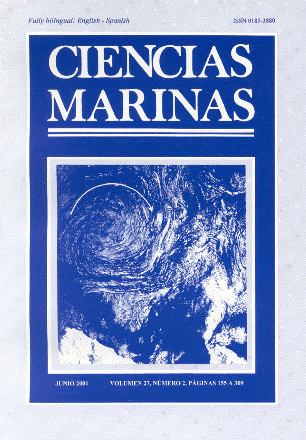A critical evaluation of the use of cluster analysis to identify contaminated sediments in the ría de vigo (nw spain)
Main Article Content
Abstract
The indiscriminate use of cluster analysis to distinguish contaminated and non-contaminated sediments has led us to make a comparative evaluation of different cluster analysis procedures as applied to heavy metal concentrations in subtidal sediments from the Ría de Vigo, NW Spain. The use of different cluster algorithms and other transformations from the same departing set of data lead to the formation of different clusters with a clear inconclusive result about the contamination status of the sediments. The results show that this approach is better suited to identifying groups of samples differing in sedimentological characteristics, such as grain size, rather than in the degree of contamination. Our main aim is to call attention to these aspects in cluster analysis and to suggest that researchers should be rigorous with this kind of analysis. Finally, the use of discriminant analysis allows us to find a discriminant function that separates the samples into two clearly differentiated groups, which should not be treated jointly.
Downloads
Article Details
This is an open access article distributed under a Creative Commons Attribution 4.0 License, which allows you to share and adapt the work, as long as you give appropriate credit to the original author(s) and the source, provide a link to the Creative Commons license, and indicate if changes were made. Figures, tables and other elements in the article are included in the article’s CC BY 4.0 license, unless otherwise indicated. The journal title is protected by copyrights and not subject to this license. Full license deed can be viewed here.

